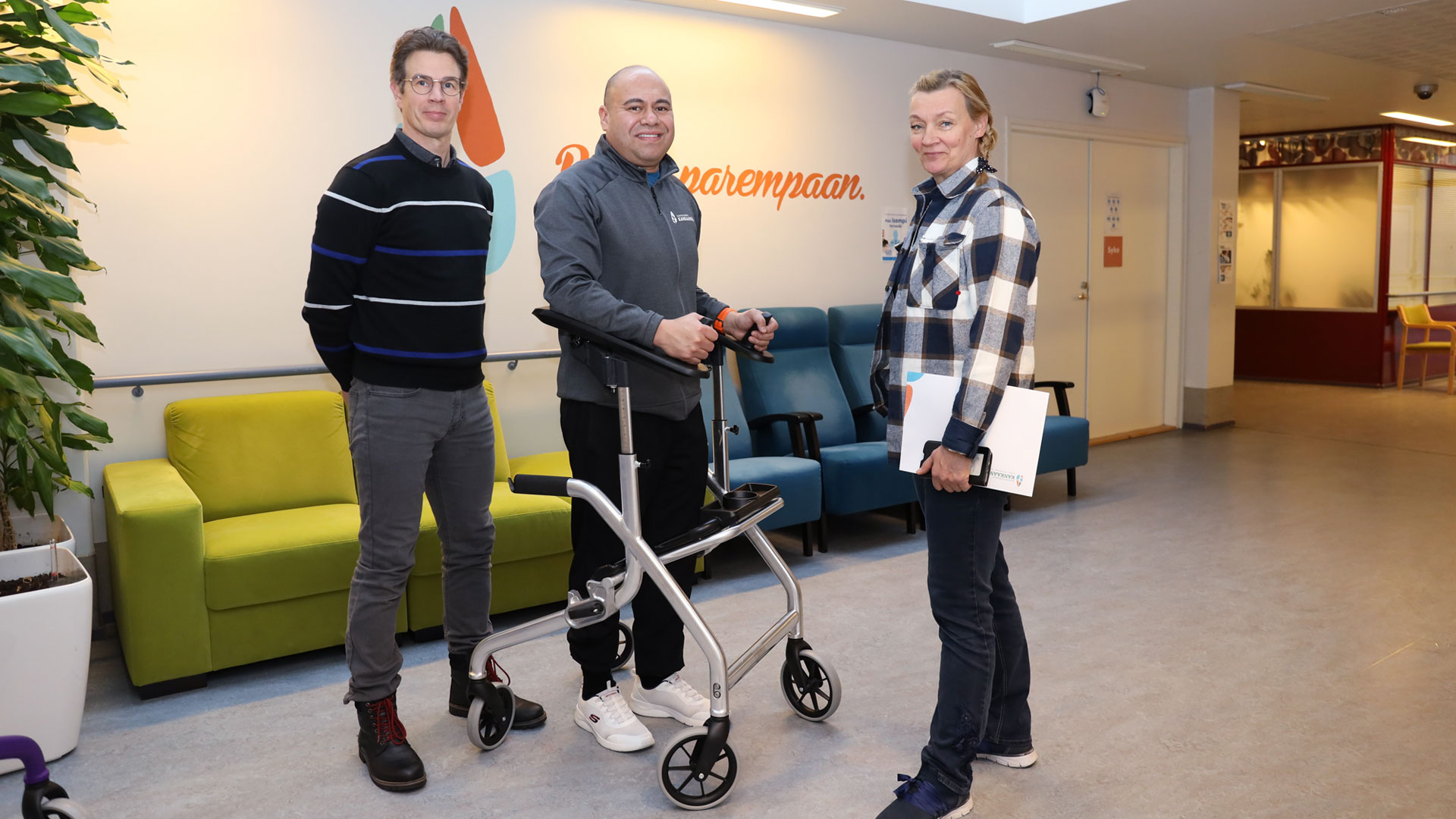Until now, people in need of a walking aid have had to resort to using a rolling walker, and there is a slight problem. The user of a rolling walker has to lean forward and push the device in a hunched posture, which makes them appear older and frailer than they actually are. With the MiiMove walking aid, a new Finnish innovation, the person is able to walk upright naturally and easily, and the design is suitable for rehabilitees of all ages.
Muodonmuutos had the pleasure and privilege to participate in the development of MiiMove prototypes together with MiiMove’s design and product development team. The collaboration aimed to achieve a design product that is distinct from the rolling walker world with functional prototypes that fulfil strength and usability requirements and create production-ready plans for a new high-end product.

Thanks to MiiMove, a person in need of a walking aid can move proudly with their head held high.
We received an assignment where we were tasked with developing the look of a walking aid to be energetic and enticing, as well as improving its sturdiness. We also designed technical details, such as adjustments and folding mechanisms, and defined suitable materials and fabrication techniques. Improving the usability of the seat and integrating it better into the design also posed its own challenges.
We got down to business by creating a few different design concepts that differed from each other in terms of design, structure, materials and fabrication techniques.
Wow effect with design and materials
By studying and ruling out different fabrication techniques, we ended up with a tubular structure for the MiiMove. However, we decided that using something else than a round steel tube would be a good way to increase the freedom of design, desirability of the product and optimisation of the structure.
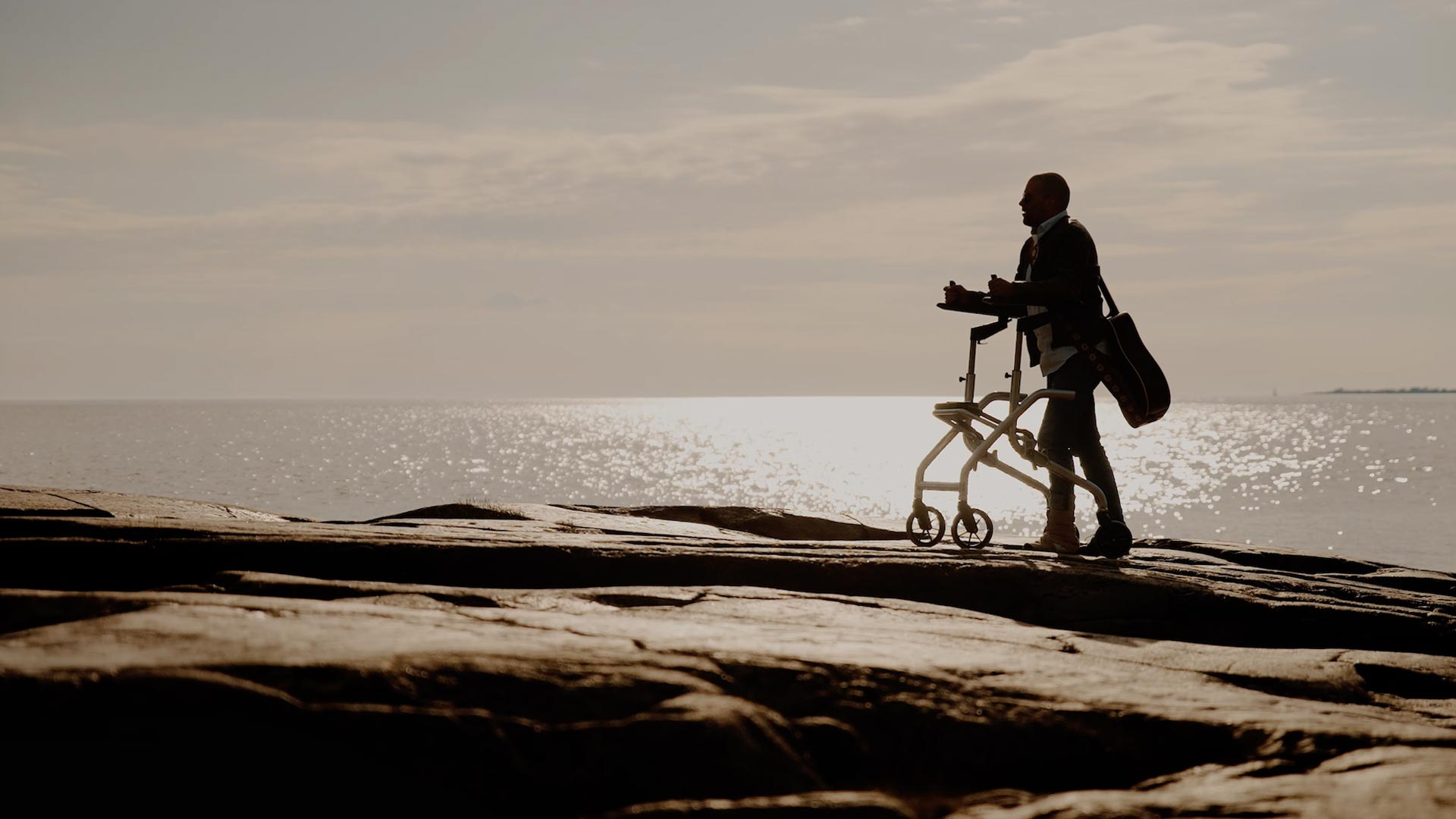
With MiiMove walking is natural and easy, and the design suits rehabilitees of all ages.
Aluminium was chosen as the material thanks to its light weight, durability and malleability. We could not find an adequate option from standard aluminium profiles so we designed an oval-like profile based on our own dimensions. With our own profile we achieved optimal dimensions in terms of both strength and weight as well as design. We also conducted strength analyses to ensure that the profiles and the geometry of the frame can withstand the specified loads.
Carefully thought-out details and improved fabricability
A walking aid must be suitable for people of different sizes and ages, so it must be adjustable to different heights and widths and suit users who need support in different ways. The developers of MiiMove had already defined the dimensions and created a sound ergonomic design, so Muodonmuutos was left with the task of coming up with ideas and designing the adjustments to ensure that they were sturdy, easy to use and feasible to fabricate. Cost-effectiveness was also considered, which is why the adjustment mechanisms on both the left and right arm rest are identical on each side, for example.
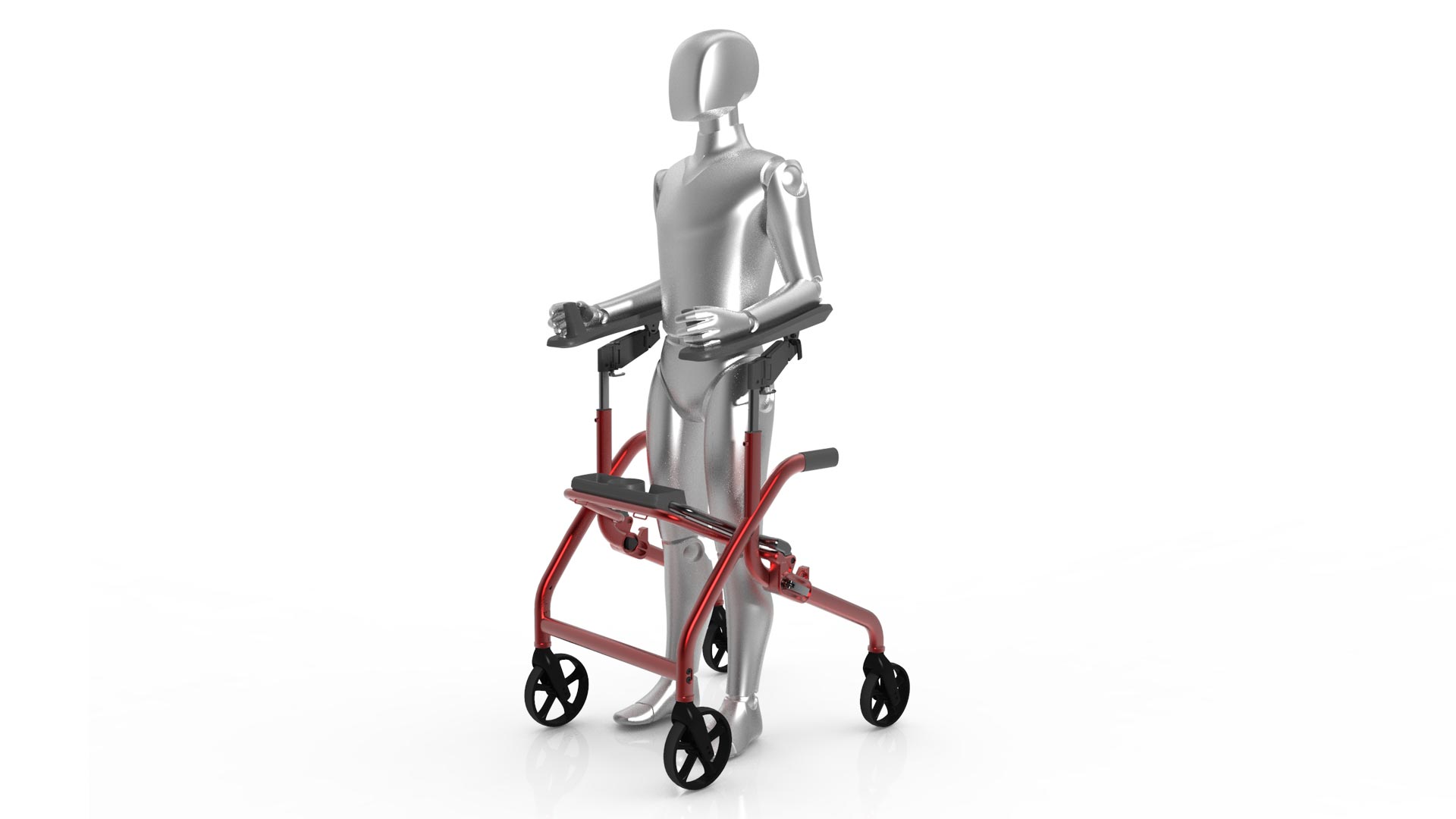
When designing MiiMove, we made use of both CAD software and physically tangible parts produced in our prototype studio.
The extensive experience Muodonmuutos has with designing control devices and ergonomics for working machinery was of tremendous help in the MiiMove project. The arm rests and handles of the walking aid were realised as soft-surfaced castings where the support structure was integrated inside them. The castings were primarily designed with CAD software, but we also made quick example versions of them in our prototype studio. With these tangible parts we could physically test and feel their ergonomics and usability. 3D models were used to ensure that the necessary support structures could fit inside the arm rests. When the final design was jointly approved, the arm rests were modelled to be ready for production. Ultimately this resulted in files that the manufacturer of the arm rests could use to conduct tool design and the subcontractor could utilise in the fabrication of the support structures for the rests.
The adjustment mechanisms were also designed flexibly with CAD software to ensure adequate ranges of movement as the designs progressed or changes were made to them. However, the physical feel cannot be simulated even with the best of plans, so we also created 3D-printed example pieces of all the mechanisms. We created these quick pieces to support the design work using our own 3D printer, while more precise and durable versions were ordered from a third-party specialist.
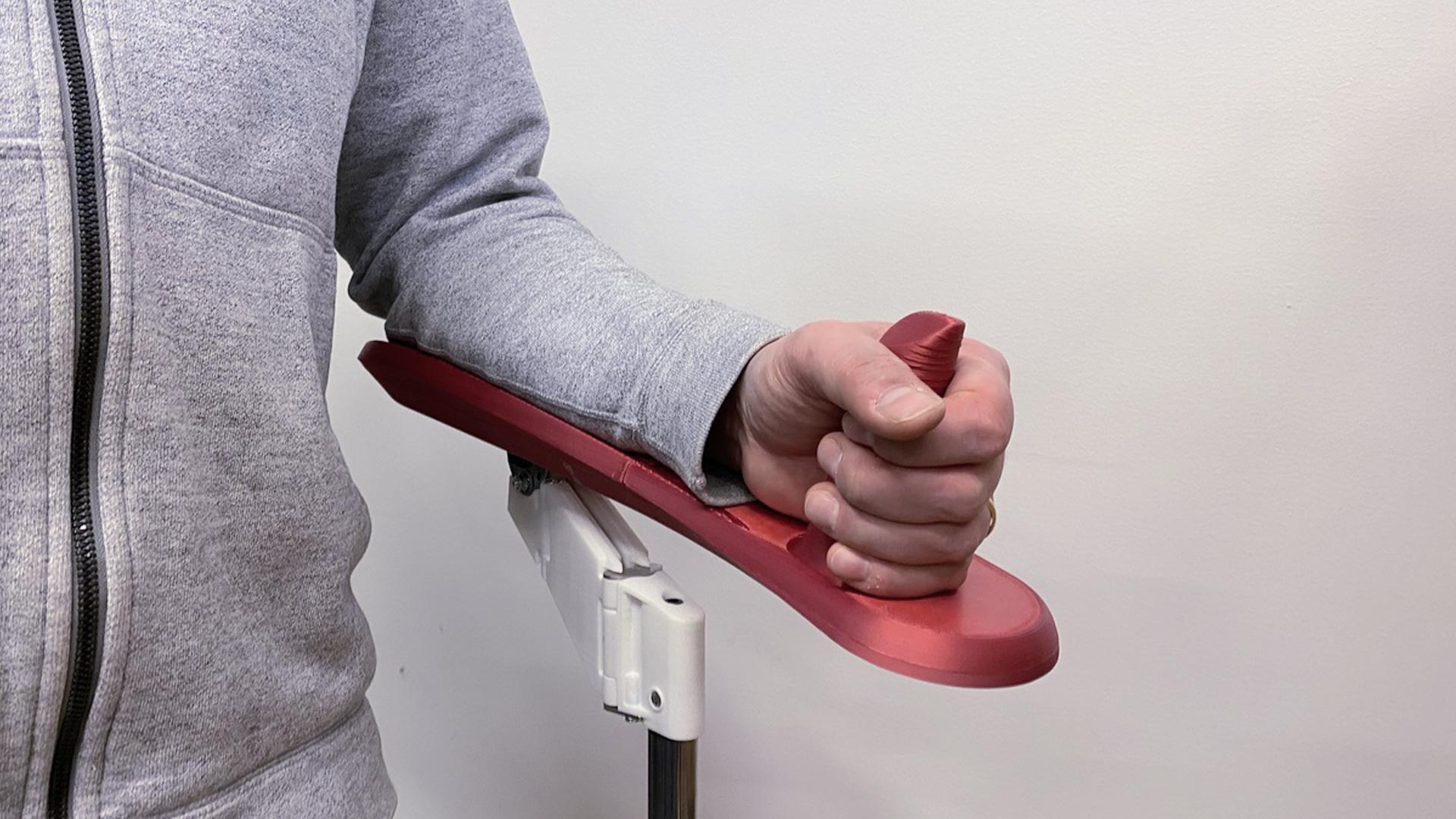
MiiMove is adjustable for users of different heights and widths, as well as for users who need different kinds of support.
A versatile seat
The walking aid has an integrated seat that allows the user to have a rest when needed. When in motion, the seat can be turned out of the way to allow the user to move upright in the centre of the device, which is the central idea of MiiMove. From designing cockpits we have learned that when space is limited, all of it must be utilised in the best possible way, so we also wanted to give the seat multiple purposes: when the seat is lifted out of the sitting position it forms a storage compartment and cup holder.
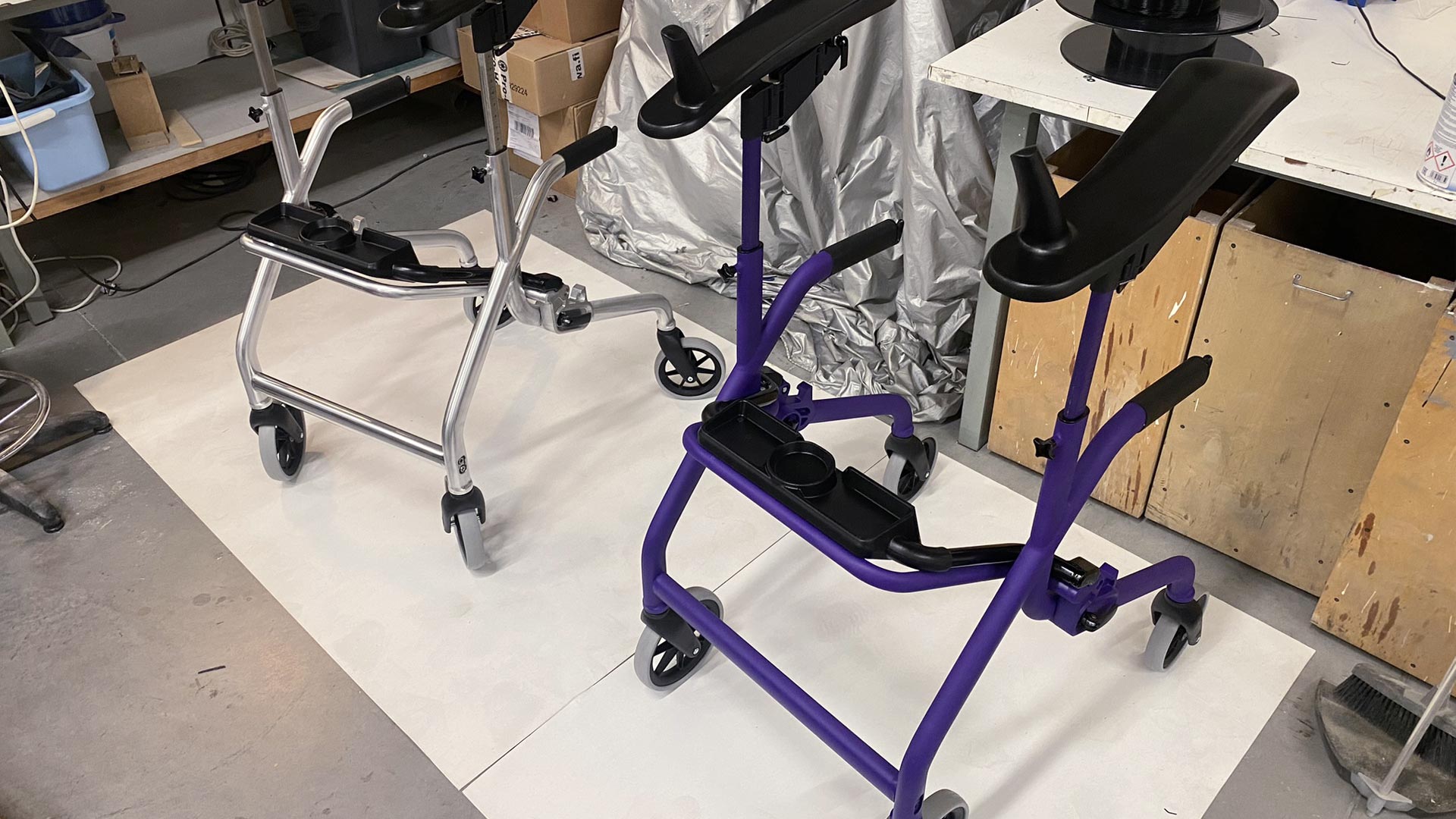
In addition to the actual design and production-ready files, the collaboration between Muodonmuutos and MiiMove also resulted in a few physical prototypes.
In addition to the actual design and production-ready files, the collaboration between Muodonmuutos and MiiMove also resulted in a few physical prototypes. The first of these was a piece produced for MiiMove’s marketing purposes that had a hard surface on the arm rests, adjustment mechanisms and seat. This hard surface cannot withstand actual use, but it gives a good idea of the final form and look of the product. In the following prototypes some of the printouts were replaced with production-quality parts that could also be tested in actual use.
Progressing in stages is a tried and true operation model for product development projects. The first prototype can be assembled quickly, and as the design work progresses, parts can be replaced with more complete ones that are made using the actual materials or surface treatment methods, for example.
Learn more about our industrial design and product development services.

